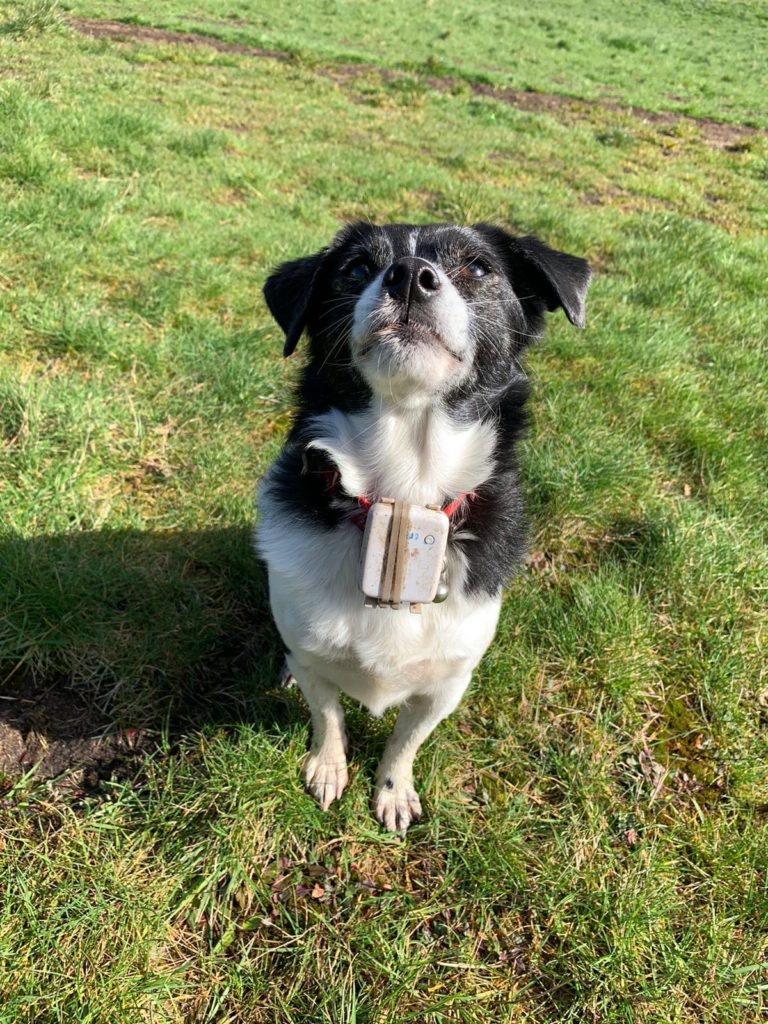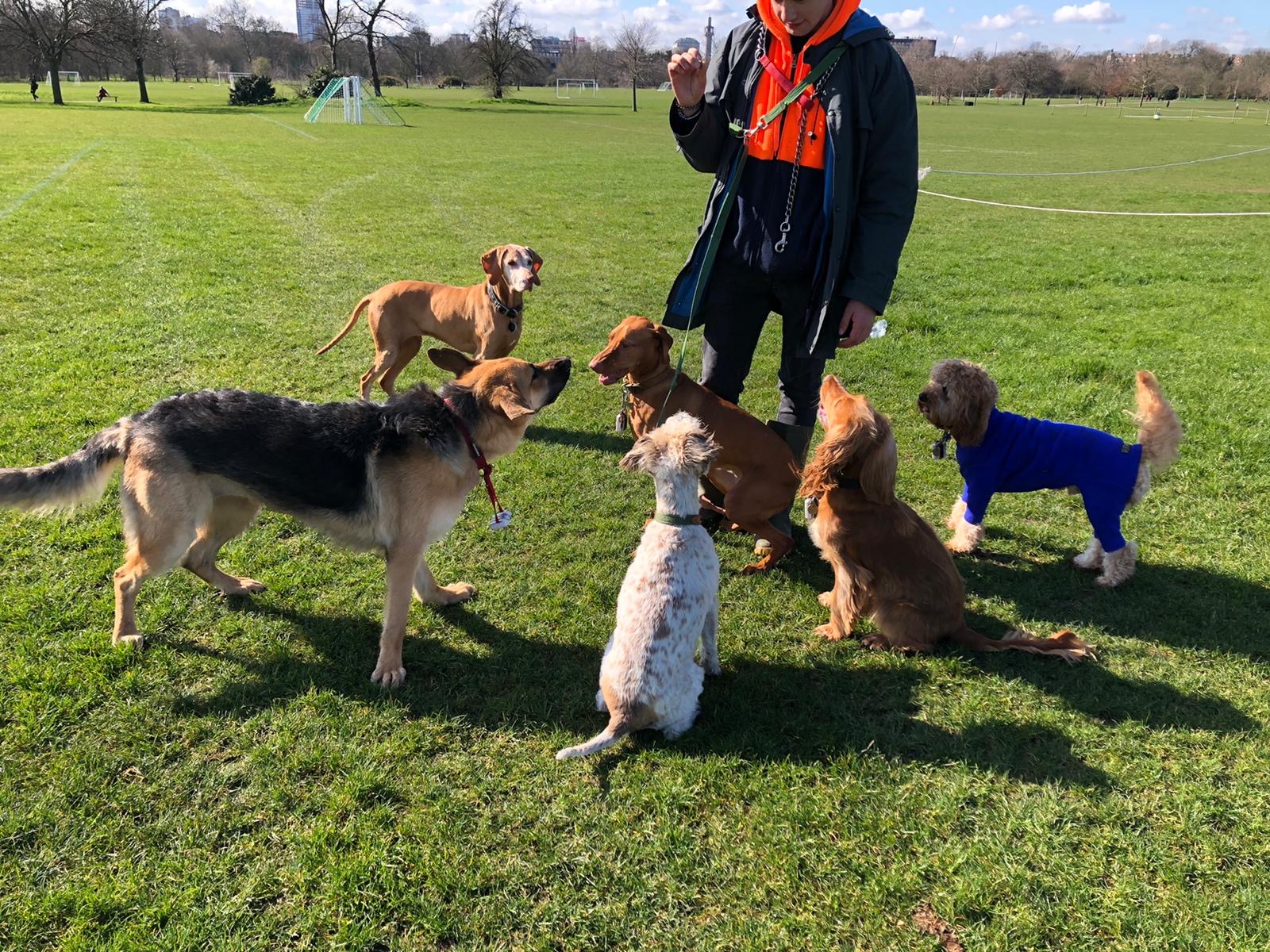As we all stay indoors and limit our daily exercise to help overcome the Coronavirus pandemic it is more essential than ever to make sure your dog is keeping stimulated at home. One way of doing this is to brush up on some basic commands – an activity that all of the family can get involved with especially kids!
All training with your dog should be a positive and enjoyable experience to help ensure a healthy bond of trust between owner and pet – this is achieved by the praise and reward approach to encourage good behaviour.
1. Sit
This is one of the most helpful commands for your dog to know and one we use regularly especially when handing out treats after a long walk. To begin make sure your dog is in front of you and place a treat in your hand. Show the treat to your dog to keep their focus and then move your hand over their head toward their tail whilst saying out loud the command “Sit”. By moving your hand over their head the dogs natural tendency is to plonk their bottom down. Once they are in the sit position give them the treat and lots of praise for doing a good job!
2. Down
To teach this command use the same technique as before and demonstrate that you have a treat in your hand. This time bring your hand down in front of them onto the ground just before their feet whilst saying the command “Down” Your dog will follow the treat with their nose and lie down in front of you. Again praise the good behaviour and reward them with the treat. If you have difficulty in achieving this position then you can try placing a low object in the way, like a chair, which means they will need to lie down to reach the treat. Once they’ve got the hang of this you can remove the obstacle and continue to practice. Again remember to encourage the good behaviour by praising and rewarding with the treat.

3. Stay
You can move onto this command once your dog has mastered the first two. This one is slightly trickier and may take time to build up to large distances so first we start small. Ask your dog to get into either the Sit or Down position. Once in position take a step back whilst saying the command “Stay”. Silently count to three (additional words might confuse them!) and then take a step back to your dog and reward them with a treat. If during the process they get up then repeat once more until they have been successful to ensure you are encouraging the correct behaviour. Once they have got the hang of this command you can gradually increase the distances you cover.
4. Come
This is a very important command for your dog to know especially in busy, built up areas where they are at risk from traffic. Your dog must know to come back to you when they are called otherwise a slight distraction, like that furry squirrel, can easily get them into danger. It is in this instance that a healthy bond between owner and dog is most evident.
The first thing to establish is that coming to you is a good thing so never scold your dog despite how long they might take to come to you as this memory will deter them in the future. You can practice at home by calling them at different times throughout the day and then rewarding them with a tasty treat! Once they know that coming to you is a good thing we can move onto the next stage of training.
The second stage is to encourage your dog to seek you out when they cannot see you – a bit like hide and seek! From another room, call your dog to you and reward them once they have found you – perhaps a nice belly rub this time?! This can be a fun game to play with your dog as they eagerly seek you out and gives them some mental stimulation whilst stuck indoors. You can alternate the treat each time or reward with a toy to make sure they know it is the behaviour they are demonstrating that is being rewarded.
Once you are sure that your dog has got the hang of it you can try it at the local park. If your local park has a fenced of dog park then this would be perfect and can put your mind at ease – just make sure it is empty to avoid any added distractions as you start out! If not you can invest in a long line lead (available at most pet shops) which will give them the sense of being off lead whilst always remaining secure. Allow them to have a bit of a sniff around and leave them to their own devices for a moment then when you are ready command them to “Come”. Once they have successfully come to you, praise and reward them and send them off again. Practice this a few times when you are out on walks so they know that this command does not mean their walk is ending. This part of the training needs to be practiced for a couple of weeks and in different environments so they become accustomed to returning to you wherever they might be.
Once you are sure your dog has this command under control you can try walking off lead in quiet areas and slowly build up to busier areas with more distractions. If your dog encounters another whilst out on a walk then allow them to have a little sniff of each other before calling them back to you – it is important for your dog to be well socialised with others. Once you are happy with your dogs ability to perform the command then you can gradually reduce the amount of treats they are rewarded with but still praise them.

A majestic Stay from Huntley
5. Heel or walking on lead
This is another excellent command for your dog to know and one you can practice at home or in the garden. This one can be tricky especially if your dog likes to pull on the lead but you’ll be grateful afterwards especially if you have a powerhouse of a dog like an Akita! To start pick a side that your dog will walk on and then hold the lead in the opposite hand. Hold a treat in your free hand closest to the dog. Show the dog the treat and begin to walk forwards whilst saying the command “Heel” and allow them to have a bit of the treat as they walk with you. If they do not follow you or they tug in another direction then suddenly change direction whilst encouraging them to follow you. Make sure to reward and praise consistently for when they are successful and they’ll be by your side in no time.
Helpful tips
- Keep your commands short and clear to avoid confusion
- Do not physically force a dog into certain positions
- Remain consistent in your approach
- Keep training periods short and sweet (5-10 minutes)
- Do not chase your dog if they do not come – they’ll think it’s a great game!

